Ports along Florida’s Atlantic Coast are advancing billions of dollars of infrastructure enhancements to increase capabilities for efficiently handling everything from a broad spectrum of containerized and breakbulk goods to artificial reef modules and recovered rocket boosters.
Cargo has kept flowing safely, with new protocols in place, although the continuing COVID-19 pandemic has led to a sustained hold on lucrative cruise activity from South Florida’s PortMiami and Port Everglades to Central Florida’s Port Canaveral to Jacksonville Port Authority facilities in the northeast corner of the Sunshine State, as well as Port Tampa Bay on the Florida Gulf Coast.
Here’s a look at the latest at Florida East Coast ports, starting in South Florida and heading northward along the Interstate 95 corridor:
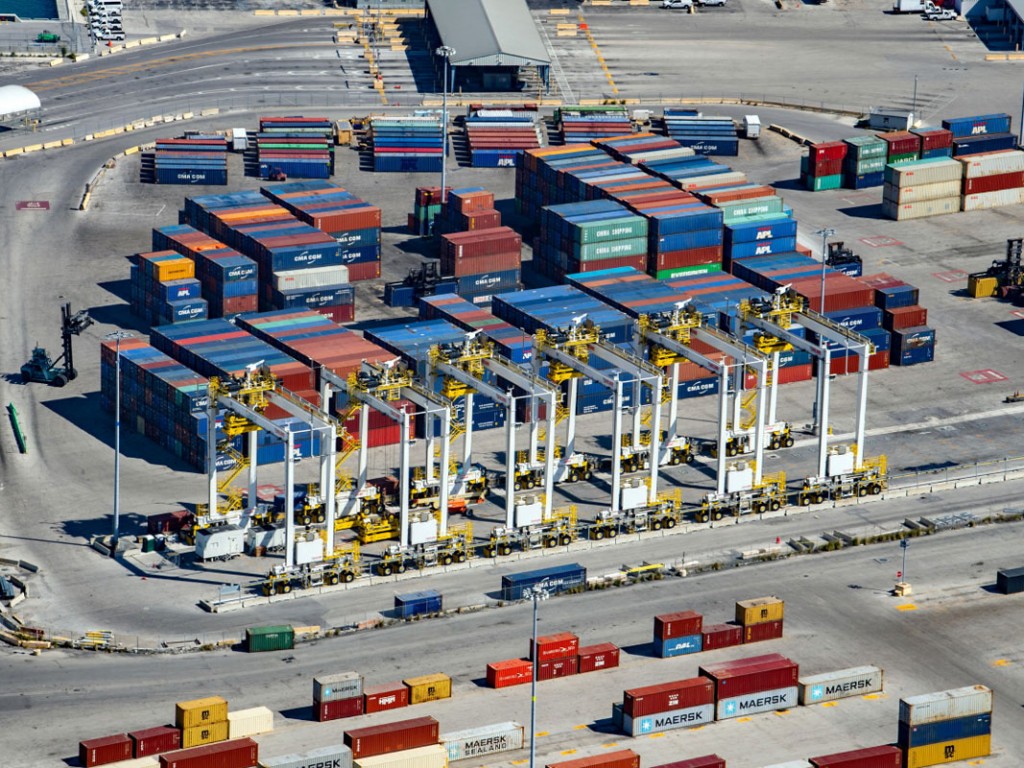
PortMiami
While the COVID-19 pandemic has continued to put the kibosh on passenger ship activity at its renowned Cruise Capital of the World, Miami-Dade County’s PortMiami keeps moving strong volumes of containerized cargo. Officials reported that the 107,088 twenty-foot-equivalent units, or TEUs, moving across docks in October was the most for any month in the port’s history, up 1.5 percent from the comparable month in 2019.
More than $1 billion in infrastructure endeavors completed over the past several years include a direct tunnel link between the island seaport and Interstate highways, enhanced on-dock rail capabilities and new super-post-Panamax ship-to-shore cranes, as well as a channel deepened to 50 feet to facilitate handling of global alliances’ megacontainerships.
Most recently, a modernization project at the densified South Florida Container Terminal, or SFCT, has replaced diesel-powered toploaders with six ecofriendly electrified rubber-tired gantries, while gate operation upgrades allow trucks to enter and exit via weigh-in-motion scales in a safety-minded touchless environment. The SFCT facility is one of three cargo terminals at PortMiami, joining those of Seaboard Marine and Port of Miami Terminal Operating Co.

Port of Miami River
With numerous private terminals along its 5 1/2-mile-long, 15-foot-deep navigational channel, the Miami River remains a crucial link between South Florida and shallow-draft Caribbean ports, including those of the Dominican Republic and Haiti, plus many smaller islands, with services reaching a total of more than 100 ports throughout the region.
A recent addition to Port of Miami River services is Miami-based Centauri Transport, carrying project cargo, dry and refrigerated containers, heavy equipment, boats and vehicles to the Outer Islands, or Family Islands, of the Bahamas, including Eleuthera, Abaco, Exuma, Bimini and Berry Islands, from a new 3 1/2-acre shipping terminal and warehouse complex on the river. Centauri Transport deploys a 190-foot-long landing craft, the Costa V, capable of carrying between 26 and 28 TEUs of containerized cargo.
While the Florida Department of Transportation continues to advance construction, maintenance and repair projects upgrading more than a dozen bridges – some nearly a century old – spanning the river, ship activity has been largely unimpeded thanks to extensive coordination among the U.S. Coast Guard, Miami River Marine Group and a host of waterway stakeholders.
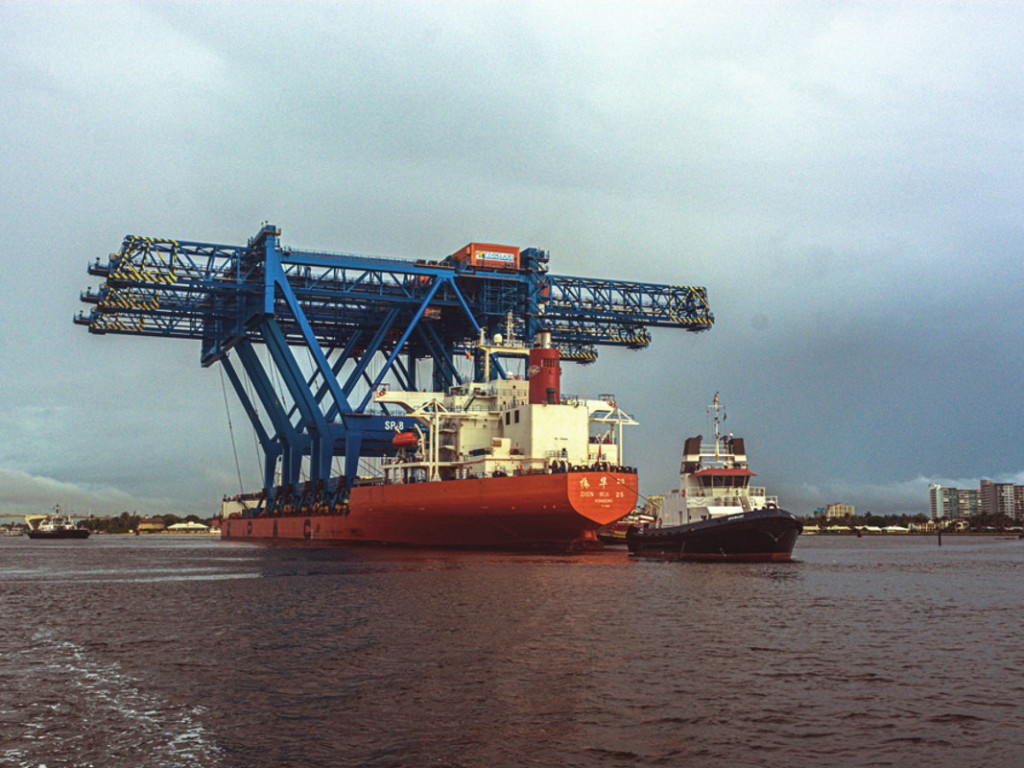
Port Everglades
Under the comprehensive master/vision plan recently approved by Broward County commissioners, Port Everglades has more than $3 billion in infrastructure undertakings targeted for the next 20 years.
The $471 million expansion of the Southport container terminal is reported to be 58 percent done, en route toward projected 2023 completion. The endeavor, the port’s largest ever, includes extending berthing area to 2,400 feet from 900 feet and addition of three newly arrived super-post-Panamax gantries joining seven existing ship-to-shore cranes, with an option to purchase three more of the larger units.
Also, Port Everglades has received U.S. Maritime Administration designation of an America’s Marine Highway route with Port Houston, Puerto Rico and the U.S. Virgin Islands, to initially be served by National Shipping of America; the long-awaited project to deepen the port’s navigation channel to as many as 50 feet is advancing toward anticipated 2029 completion; the 300,000-square-foot Port Everglades International Logistics Center, including relocated Foreign-Trade Zone No. 25, has opened in partnership with CenterPoint Properties; and, in collaboration with petroleum industry partners, Slip 1 is expanding to efficiently accommodate larger tankers.
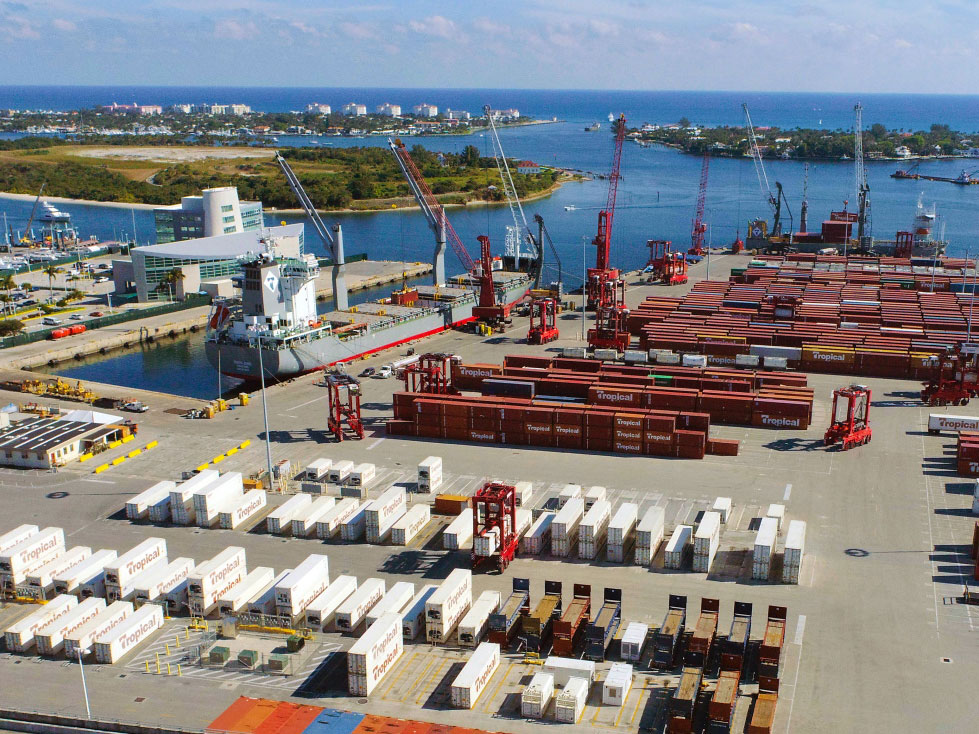
Port of Palm Beach
The Port of Palm Beach is looking to more than double its intermodal rail throughput capacity – to 95,000 TEUs a year from the present 44,000 TEUs – with the help of a $13.2 million U.S. Department of Transportation grant, to be matched by a similar sum from port and private-sector funds. The $26.5 million project includes rail replacements, truck interchange relocation and new radiation portal monitors.
Meanwhile, the port’s longtime leading tenant, Tropical Shipping, has launched a new twice-monthly service to Paramaribo, Suriname, augmenting its extensive routes throughout the Caribbean and Bahamas. Tropical also has upgraded its vessel fleet and added a 3-acre yard for refrigerated containers.
Among newest cargos moving through the Port of Palm Beach are artificial reef modules, being deployed to help protect natural reefs off South Florida’s coast, supporting marine life while providing additional areas for such recreational activities as fishing, diving and snorkeling. Port tenant Heavy Lift Services, which has handled more than 800,000 tons of modules over the course of five years, is to be joined this spring in such efforts by Resolve Marine Group.
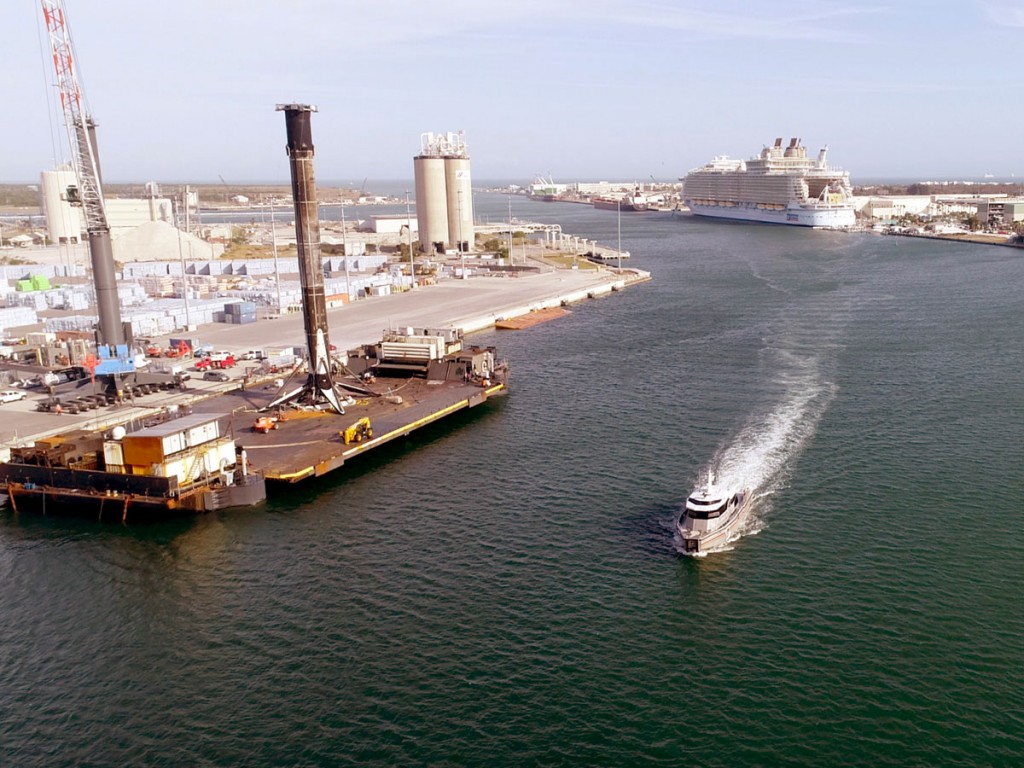
Port Canaveral
Along with healthy volumes of construction material imports, the blossoming commercial space industry is among factors keeping Port Canaveral busy despite the protracted pause of cruises. The Central Florida port’s $6.2 million Liebherr 600 mobile harbor crane was integral in 14 returns of recovered SpaceX rocket boosters in the fiscal year ended Sept. 30, 2020, with port officials anticipating an ongoing rise in activity as the space launch cadence accelerates. The Liebherr unit, delivered in early 2019, is touted as the nation’s largest such crane.
The port has completed a 120-foot extension of its North Cargo Berth 8, its newest multipurpose quay for handling space components and other heavy cargos. Slated to commence in 2022 is the $37 million, two-year project, supported largely by federal and state funding, to renovate and rebuild North Cargo Pier 3.
Port Canaveral’s latest business addition is Yara North America’s discharge and distribution of premium crop nutrition products, launched in November in partnership with terminal operator Ambassador Service International – acquired in September by Enstructure LLC – with Tampa-based A.R. Savage & Son LLC as steamship agent.
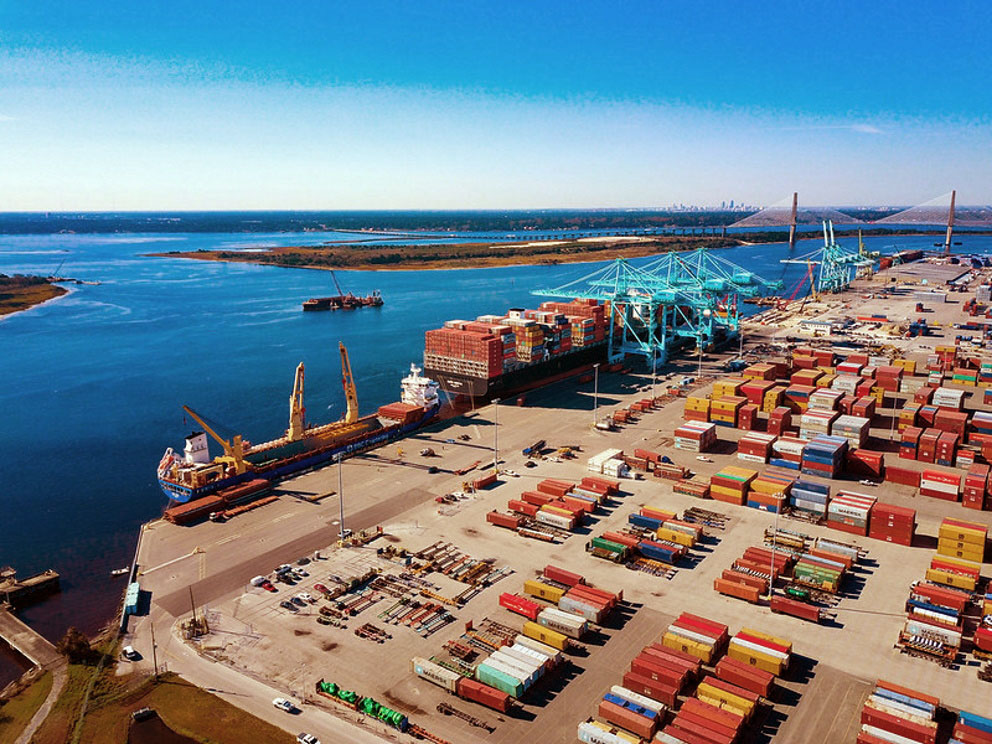
JAXPORT
In Northeast Florida, the Jacksonville Port Authority, marketed as JAXPORT, sees 2021 as a big year for infrastructure advancement, including at the SSA Jacksonville Container Terminal at Blount Island, where 700 linear feet of newly rebuilt deepwater berth space has recently been added, with a 700-linear-foot final phase slated to be finished by year-end. When the entire undertaking is complete, the facility is to be able to simultaneously accommodate two post-Panamax vessels serviced by as many as 10 electric-powered container cranes.
The project to deepen the Jacksonville shipping channel to 47 feet from its present 40 feet has been fully funded as far inland as Blount Island, with anticipated completion in 2022, three years ahead of original schedule, while an expanded Blount Island vessel turning basin is on track to be in place by the end of this year.
In addition, JAXPORT, which plans to unveil a new strategic master plan Feb. 23, announced in December that Westford, Massachusetts-based 1A Auto, a leading online-only aftermarket auto parts retailer, has selected Jacksonville for Southeast U.S. distribution operations via an 86,800-square-foot warehouse.
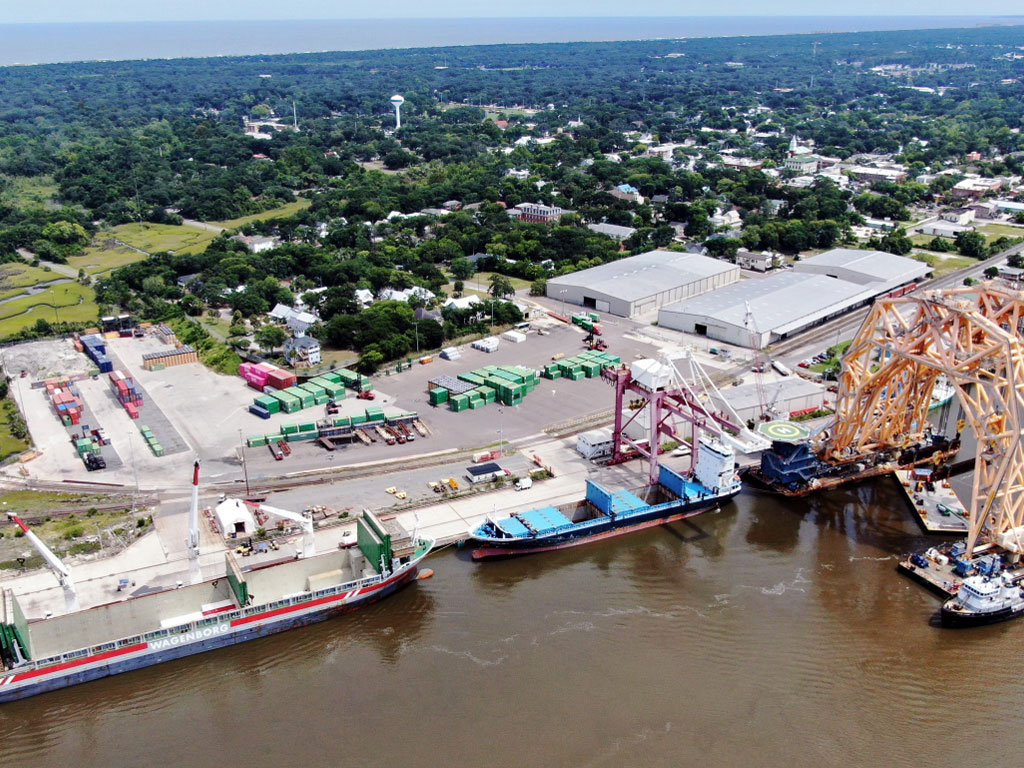
Port of Fernandina
Just south of the Florida-Georgia line, the Port of Fernandina, operated by Worldwide Terminals Fernandina LLC under a 35-year agreement with the Ocean Highway and Port Authority of Nassau County, looks to build upon its traditional breakbulk-focused base while also pursuing prospects for a weekly container feeder service to the Caribbean and Central America and potential coastwise container-on-barge operations.
The port’s breakbulk business is largely driven by Sundsvall, Sweden-based Svenska Cellulosa AB, or SCA, which imports wood pulp on Wagenborg vessels under a multiyear agreement. Worldwide Terminals is teaming with CSX on deliveries of the commodity throughout the Southeast and Midwest via rail-served, on-dock warehouses.
The Port of Fernandina also has seen completion of its first channel project in two decades, making its berths fully accessible to ships with 40-foot drafts. And it has acquired a tugboat to help lower port costs – an action taken in conjunction with a $1.3 million America’s Marine Highway grant from the U.S. Maritime Administration to assist in launch of container-on-barge service that could extend along the M-95 corridor as far as Virginia and Miami.





